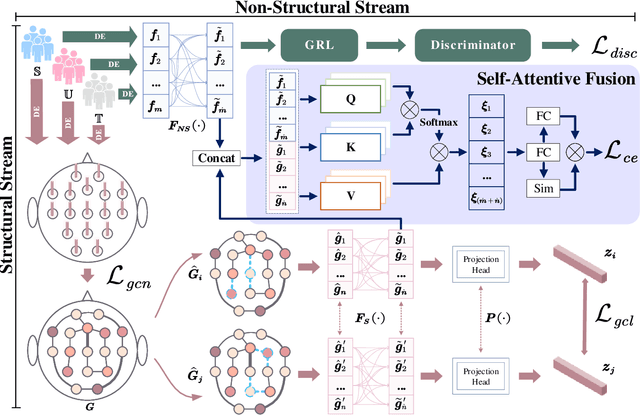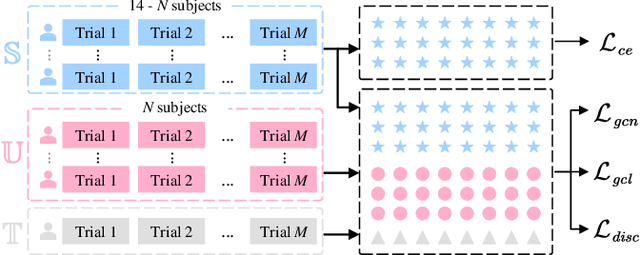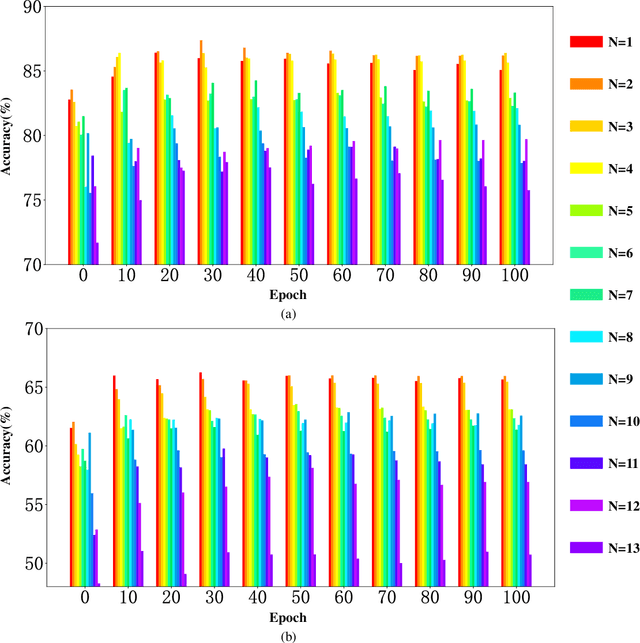Semi-Supervised Dual-Stream Self-Attentive Adversarial Graph Contrastive Learning for Cross-Subject EEG-based Emotion Recognition
Paper and Code
Aug 13, 2023



Electroencephalography (EEG) is an objective tool for emotion recognition with promising applications. However, the scarcity of labeled data remains a major challenge in this field, limiting the widespread use of EEG-based emotion recognition. In this paper, a semi-supervised Dual-stream Self-Attentive Adversarial Graph Contrastive learning framework (termed as DS-AGC) is proposed to tackle the challenge of limited labeled data in cross-subject EEG-based emotion recognition. The DS-AGC framework includes two parallel streams for extracting non-structural and structural EEG features. The non-structural stream incorporates a semi-supervised multi-domain adaptation method to alleviate distribution discrepancy among labeled source domain, unlabeled source domain, and unknown target domain. The structural stream develops a graph contrastive learning method to extract effective graph-based feature representation from multiple EEG channels in a semi-supervised manner. Further, a self-attentive fusion module is developed for feature fusion, sample selection, and emotion recognition, which highlights EEG features more relevant to emotions and data samples in the labeled source domain that are closer to the target domain. Extensive experiments conducted on two benchmark databases (SEED and SEED-IV) using a semi-supervised cross-subject leave-one-subject-out cross-validation evaluation scheme show that the proposed model outperforms existing methods under different incomplete label conditions (with an average improvement of 5.83% on SEED and 6.99% on SEED-IV), demonstrating its effectiveness in addressing the label scarcity problem in cross-subject EEG-based emotion recognition.
 Add to Chrome
Add to Chrome Add to Firefox
Add to Firefox Add to Edge
Add to Edge